Présentation
RÉSUMÉ
La technologie Green Communications offre la possibilité à un opérateur, à un intégrateur ou à un propriétaire de site d'installer des réseaux à des coûts extrêmement bas et consommant une quantité d'énergie infinitésimale comparé aux réseaux actuels. La technologie garantit une qualité de service supérieure en déployant un routage intelligent de l'information et qui utilise les chemins les plus larges en débit pour transférer l'information à bon port. Les machines formant le réseau s'autoconfigurent et s'adaptent automatiquement à la dynamique du réseau. Il suffit tout simplement de les allumer pour qu'elles deviennent opérationnelles. Elles ne consomment qu'entre 3 et 5 watts en utilisation et emploient la fonction Start and Stop qui permet d'éteindre de manière distribuée et automatique tous les équipements du réseau qui ne sont pas nécessaires. Cette fonction est la première en son genre et permet des économies d'énergie allant de 20 à 100 % en fonction de la charge du réseau.
Lire cet article issu d'une ressource documentaire complète, actualisée et validée par des comités scientifiques.
Lire l’articleAuteur(s)
-
Khaldoun AL AGHA : Professeur à l'université de Paris-Sud - Cofondateur de Green Communications
INTRODUCTION
La technologie Green Communications offre la possibilité à un opérateur, à un intégrateur ou à un propriétaire de site d'installer des réseaux à des coûts extrêmement bas et consommant une quantité d'énergie infinitésimale comparé aux réseaux actuels. La technologie garantit une qualité de service supérieure en déployant un routage intelligent de l'information et qui utilise les chemins les plus larges en débit pour transférer l'information à bon port.
Les machines formant le réseau s'autoconfigurent et s'adaptent automatiquement à la dynamique du réseau. Il suffit tout simplement de les allumer pour qu'elles deviennent opérationnelles. Elles ne consomment qu'entre 3 et 5 watts en utilisation et emploient la fonction Start and Stop qui permet d'éteindre de manière distribuée et automatique tous les équipements du réseau qui ne sont pas nécessaires. Cette fonction est la première en son genre et permet des économies d'énergie allant de 20 à 100 % en fonction de la charge du réseau.
Green Communications technology offers the possibility for an operator, an integrator or a site owner to install networks at extremely low cost and consume an infinitesimal amount of energy compared to existing networks. The technology ensures high quality of service by deploying intelligent routing and uses the widest paths to route the information from source to destination.
The nodes forming the network configure themselves automatically and update their configuration to the network variation. Nodes need simply that we switch on their power to form the network. Those nodes consume between 2 and 5 watts in use and apply the « start and stop » to shut down automatically in a distributed manner. This innovative procedure allows energy savings of 20 to 100 % depending on network load.
Ad hoc/mesh Network, Green networking, Start and Stop, routage intelligent, réseaux bas coût
Ad hoc/mesh Network, Green networking, Start and Stop, intelligent routing, low cost networks
Domaine : Réseaux et télécommunications
Degré de diffusion de la technologie : Émergence | Croissance | Maturité
Technologies impliquées : Réseaux Wi-Fi, Réseaux mesh, Réseaux ad hoc
Domaines d'application : réseaux de communication
Principaux acteurs français :
Pôles de compétitivité : systematic
Centres de compétence : –
Industriels : Opérateurs, équipementiers
Autres acteurs dans le monde : –
Contact : [email protected]
DOI (Digital Object Identifier)
Cet article fait partie de l’offre
Innovations technologiques
(190 articles en ce moment)
Cette offre vous donne accès à :
Une base complète d’articles
Actualisée et enrichie d’articles validés par nos comités scientifiques
Des services
Un ensemble d'outils exclusifs en complément des ressources
Des modules pratiques
Opérationnels et didactiques, pour garantir l'acquisition des compétences transverses
Doc & Quiz
Des articles interactifs avec des quiz, pour une lecture constructive
Présentation
Cet article fait partie de l’offre
Innovations technologiques
(190 articles en ce moment)
Cette offre vous donne accès à :
Une base complète d’articles
Actualisée et enrichie d’articles validés par nos comités scientifiques
Des services
Un ensemble d'outils exclusifs en complément des ressources
Des modules pratiques
Opérationnels et didactiques, pour garantir l'acquisition des compétences transverses
Doc & Quiz
Des articles interactifs avec des quiz, pour une lecture constructive
BIBLIOGRAPHIE
-
(1) - SANTI (P.) - Topology control in wireless ad hoc and sensor networks. - ACM Computing Surveys, vol. 37, no 2, p. 164-194, juin 2005.
-
(2) - AGARWAL (S.), KRISHNAMURTHY (S.), KATZ (R.), DAO (S.) - Distributed power control in ad hoc wireless networks, in 20th Personal, Indoor and Mobile Radio Communications Symposium (PIMRC'01). - IEEE, oct. 2001.
-
(3) - STOJMENOVIC (I.), LIN (X.) - Power-aware localized routing in wireless networks. - IEEE Transactions on Parallel and Distributed Systems, vol. 12, no 11, p. 1122-1133, nov. 2001.
-
(4) - DUKE (R.), RAIS (C.), WANG (K.-Y.), TRIPATHI (S.) - Signal stability based adaptive routing (ssa) for ad hoc mobile networks. - In IEEE Personal Communications, IEEE, fév. 1997.
-
(5) - TOH (C.-K.) - Maximum battery life routing to support ubiquitous mobile computing in wireless ad hoc networks. - IEEE Communication Magazine, vol. 39, no 6, p. 138-147, juin 2001.
-
...
Soekris Engineering, Inc. : http://soekris.com/
BeagleBoard.org. BeagleBoard System Reference Manual Rev C4, déc. 2009 : http://beagleboard.org/
The Raspberry Pi Foundation, The Raspberry Pi computer : http://www.raspberrypi.org/ http://www.ietf.org http://www.3GPP.org http://en.wikipedia.org/wiki/IEEE_802.11p
HAUT DE PAGE
802.11a/D7.0 - 1999 - Part 11 : Wireless lan medium access control (mac) and physical layer (phy) specifications : high speed physical layer in the GHZ band - -
802.11n - 2009 - IEEE standard for information technology – telecommunications and information exchange between systems – local and metropolitan area networks – specific requirements part 11 : Wireless lan medium access control (mac) and physical layer (phy) specifications amendment 5 : enhancements for higher throughput - -
HAUT DE PAGE
Khaldoun Al Agha, « Start and Stop for Internet Routers. » FR-INPI 09 58890 (2011).
...Cet article fait partie de l’offre
Innovations technologiques
(190 articles en ce moment)
Cette offre vous donne accès à :
Une base complète d’articles
Actualisée et enrichie d’articles validés par nos comités scientifiques
Des services
Un ensemble d'outils exclusifs en complément des ressources
Des modules pratiques
Opérationnels et didactiques, pour garantir l'acquisition des compétences transverses
Doc & Quiz
Des articles interactifs avec des quiz, pour une lecture constructive










